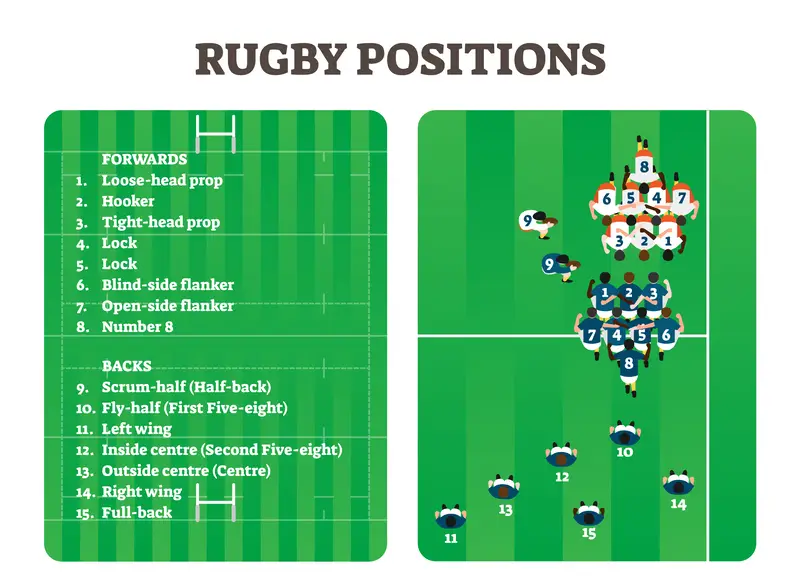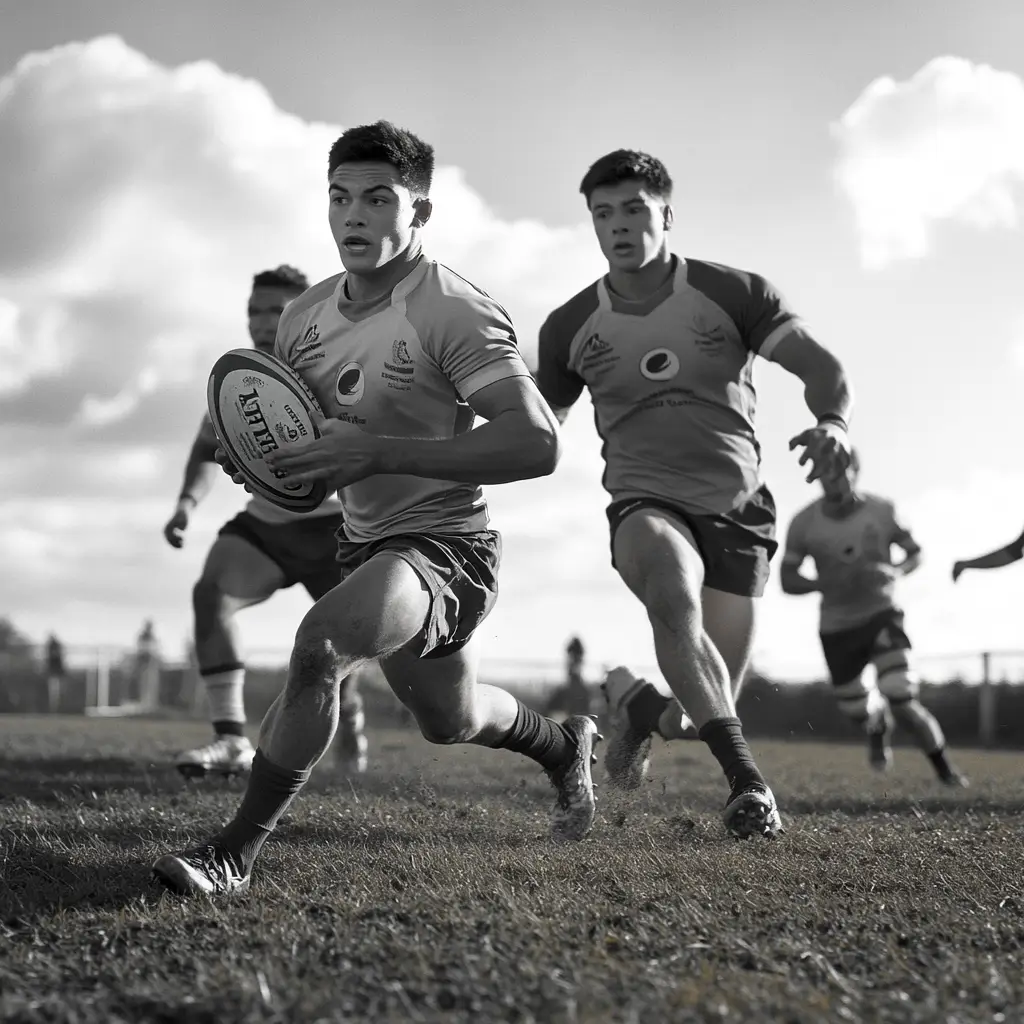Rugby union is a thrilling and complex sport combining physical prowess and strategic thinking. Understanding the gameplay, mastering critical skills, and developing effective strategies are essential for success in the field. This guide covers the fundamentals of rugby union gameplay, helping players and enthusiasts appreciate and excel.
Basic Structure of a Rugby Union Gameplay
Two teams of 15 players each are playing in the Rugby Union. The game is divided into two halves, each lasting 40 minutes, with a 10-minute halftime break. This makes the total duration of a rugby union game 90 minutes, including the halftime break. Extra time may be played if the score is tied in knockout stages at the end of regular time.

Key Positions and Their Roles
Understanding the positions and roles of each player on the field is crucial for compelling gameplay. The positions are broadly categorized into forwards and backs.
-
- Forwards: These players are participating in physical contests for the ball, such as scrums and lineouts. They are typically more extensive and robust, focusing on gaining possession and advancing the ball through powerful runs and tactical plays.
-
- Props and Hooker: Form the front row in scrums, providing stability and strength.
-
- Locks: Tall players who excel in lineouts and provide support in scrums.
-
- Flankers and Number Eight: Versatile players involved in both defense and attack.
-
- Forwards: These players are participating in physical contests for the ball, such as scrums and lineouts. They are typically more extensive and robust, focusing on gaining possession and advancing the ball through powerful runs and tactical plays.
- Backs: Generally faster and more agile, backs focus on exploiting space, executing strategic plays, and scoring tries.
-
- Half-backs (Scrum-Half and Fly-Half): Key decision-makers, initiating attacks and controlling the game’s flow.
-
- Centers: Strong runners and tacklers, bridging the forwards and the backs.
- Wings and Full-Back: Fast players who finish attacks and provide defensive coverage.Fundamental Skills for Rugby Union
-
Success in rugby union depends on mastering several core skills:
-
- Passing: Accurate passing is vital for maintaining possession and creating scoring opportunities. Players should practice short and long passes, ensuring they can pass effectively with both hands.
-
- Tackling: Tackling is a critical defensive skill. Proper technique is crucial to avoid injuries and ensure effective stops. Players should focus on positioning, grip, and follow-through.
-
- Kicking: Kicking can be used for various purposes, such as gaining territory, scoring points, or restarting play. Players should develop different types of kicks, including punts, drop, and place kicks.
-
- Rucking and Mauling: These are methods of contesting the ball on the ground (rucking) and in a standing contest (mauling). Effective rucking and mauling require strength, coordination, and teamwork.
-
- Scrummaging: The scrum is a contest for possession involving the forwards. Proper technique, strength, and timing are essential for a successful scrum.
Effective Strategies in Rugby Union
Strategic play is crucial in rugby union, where teams must adapt their tactics based on the flow of the game and their opponent’s strengths and weaknesses.
-
- Possession and Territory: Teams aim to control the ball and advance into the opponent’s half. Effective use of forwards in carrying the ball and backs in exploiting space is essential.
-
- Set Plays: Planned moves from scrums, lineouts, and restarts can create scoring opportunities. Teams practice these plays to ensure precise execution.
-
- Defensive Alignment: The key to preventing scores is organizing the defense to cover the field effectively and anticipate the opponent’s moves. This includes maintaining a solid line and using coordinated tackles.
-
- Attack Patterns: Utilizing varied attack patterns, such as backline moves and forward drives, can keep the opposition guessing and create gaps in their defense.
-
- Kick Strategies: Strategic kicking can relieve pressure, gain territory, and create scoring opportunities. This includes high kicks (up-and-under), grubber kicks, and tactical punts.
The Role of Fitness and Conditioning
Rugby union is physically demanding, requiring players to be in peak condition. A well-rounded fitness regime with strength training, endurance, speed work, and agility drills is essential. Players must also focus on recovery, nutrition, and injury prevention to maintain optimal performance throughout the season.
Common Mistakes and How to Avoid Them
Poor discipline, telegraphed passes, or over-committing in defense can be costly. Reviewing footage and practicing under pressure are effective solutions.
Rugby Union Gameplay in Different Conditions
Rain, heat, or altitude changes gameplay. Wet games favor kicks and conservatism, while dry days invite expansive play. Smart teams adapt, not resist.
How Technology Enhances Rugby Strategy Today
With tools like GPS trackers, performance analysis software, and drone footage, coaches get unparalleled insights. This data informs player workload, tactics, and injury prevention.
FAQs
What happens after 20 phases in rugby union?
Nothing specific happens after 20 phases; the team can continue playing if they retain possession.
Is a rugby game 80 minutes?
Yes, a rugby union game lasts 80 minutes, divided into two 40-minute halves. Read more about the duration of the Ruby Union game here.
How many players are on a rugby union team?
A rugby union team has 15 players on the field.
What is the purpose of a scrum in rugby union?
A scrum restarts play after minor infringements, with teams contesting possession.
How does scoring work in rugby union?
Points are scored through tries (5 points), conversions (2 points), penalty kicks (3 points), and drop goals (3 points).
What is the most important skill in Rugby Union gameplay?
Decision-making under pressure is often considered the most vital skill, combining tactical awareness with execution.







